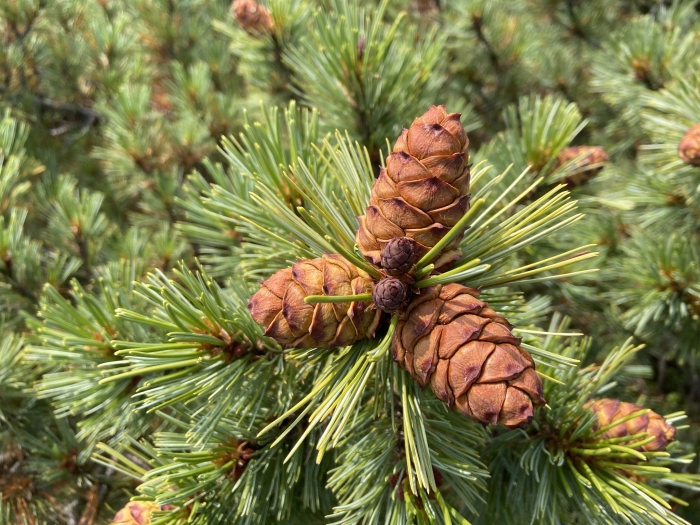Dwarf Siberian Pine
(Pinus pumila)
Dwarf Siberian Pine (Pinus pumila)
/
/

Maria Khoreva
CC BY 4.0


























Estimated Native Range
Summary
Dwarf Siberian Pine is valued for its hardiness and adaptability to harsh conditions, making it suitable for rock gardens, alpine gardens, and as a ground cover in cold climates. Its compact size and resilience to wind also make it a good choice for bonsai. The cultivar ’Glauca’, awarded the Royal Horticultural Society’s Award of Garden Merit, is noted for its attractive blue-green foliage. In cultivation, it requires full sun exposure and can tolerate a range of soil conditions, from slow to medium drainage. While generally low-maintenance, it is important to protect young plants from extreme cold and drying winds.CC BY-SA 4.0
Plant Description
- Plant Type: Tree, Shrub
- Height: 3-5 feet
- Width: 3-12 feet
- Growth Rate: Slow
- Flower Color: N/A
- Flowering Season: Non-Flowering
- Leaf Retention: Evergreen
Growth Requirements
- Sun: Full Sun, Part Shade
- Water: Medium
- Drainage: Medium
Common Uses
Bird Garden, Deer Resistant, Drought Tolerant, Edible*Disclaimer: Easyscape's listed plant edibility is for informational use. Always verify the safety and proper identification of any plant before consumption., Fragrant, Low Maintenance, Rabbit Resistant, Rock Garden, Street Planting
Natural Habitat
Subalpine zones and mountain tundra of Northeast Asia, including Siberia, northern Mongolia, northern Japan, and Korea
Other Names
Common Names: Siberian Dwarf Pine, Dwarf Stone Pine, Creeping Pine, Japanese Stone Pine, Japanische Zwergkiefer, Kriechkiefer, Zwergkiefer, Törpe Cirbolya, Pino Nano Siberiano, Dwergden
Scientific Names: , Pinus pumila, Pinus nana, Pinus cembra subsp. pumila, Pinus cembra var. pumila, Pinus cembra var. pygmaea, Pinus cembrea var. pumila, Pinus pumila f. auriamentata, Pinus pumila var. mongolica,
GBIF Accepted Name: Pinus pumila (Pall.) Regel